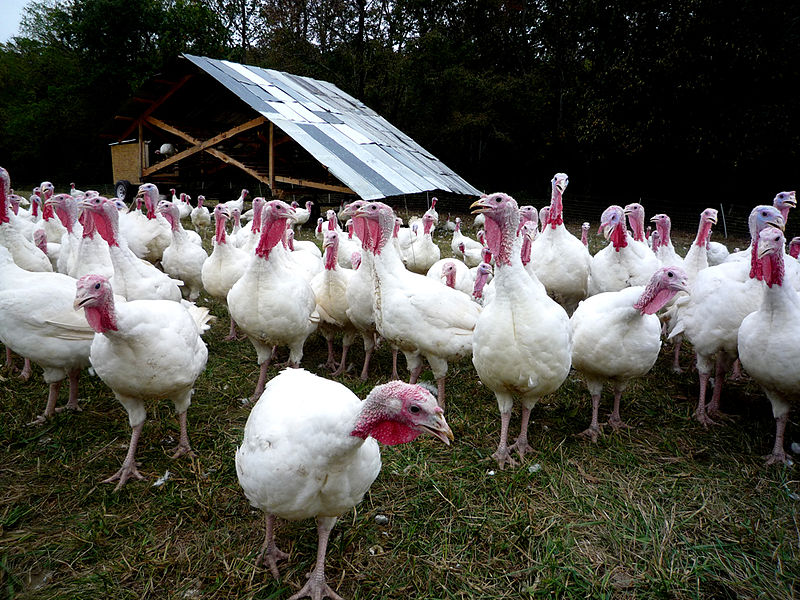
domesticated turkeys have been raised for nearly 2,000 years as free-range poultry and in pens
Source: Wikimedia, Turkeys at Polyface Farm

domesticated turkeys have been raised for nearly 2,000 years as free-range poultry and in pens
Source: Wikimedia, Turkeys at Polyface Farm
English colonists discovered that the wild turkeys in Virginia were both abundant and delicious. William Strachey wrote in 1612:1
The turkeys raised in Virginia are descendants of birds that were native to Mexico. Like all birds, the ancestors of turkeys were dinosaurs.
Turkeys were first domesticated by the Olmec as much as 2,000 years ago, perhaps for ceremonies and rituals as well as for food. Archeologists excavating at a Zapotec fortress in Oaxaca found eggs and the remains of juvenile and adult turkeys dating back to around 500 CE (Common era). The Aztecs later called the bird "huehxōlōtl" for “Giant Monster."
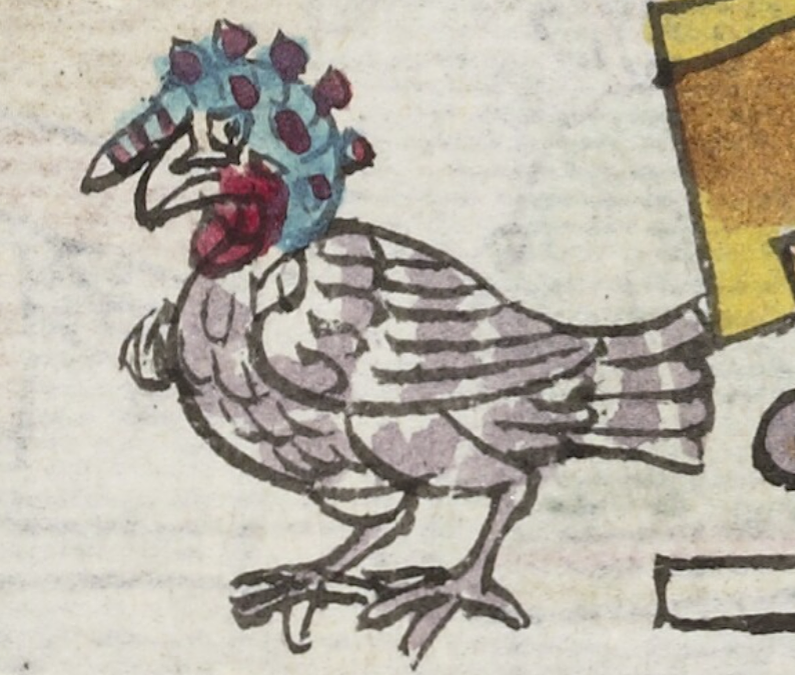
the Aztec glyph for the turkey hen (huexolotl)
Source: Bodleian Libraries, University of Oxford, odex Mendoza
Ancestral Pueblo peoples, in what is now the Southwest of the United States, raised free-range turkeys and also kept turkeys in special pens. However, the Native Americans in Virginia were not keeping domesticated turkeys when European colonists arrived.2
Berkeley Plantation claims the "first Thanksgiving" occurred there on December 4, 1619, with a meal by 35 settlers and their leader Captain John Woodlief. Those colonists had sailed from Bristol on the Margaret to occupy an 8,000-acre land grant to the Berkeley Company. The event, which was required according to the sailing instructions, was primarily a religious ceremony thanking God for safe passage across the Atlantic Ocean.
There were no Native Americans involved, and there were no turkeys were consumed in that 1619 ceremony. Most likely, the food eaten by the new arrivals consisted of months-old ship rations and whatever fresh seafood had been caught that day. The ceremony was repeated in 1620 (the year the Mayflower reached Massachusetts) and 1621. It ceased after Powhatan's successor as paramount chief, Opechancanough, led an uprising in 1622 that forced abandonment of Berkeley Hundred.
Some English immigrants in Virginia gave thanks for a safe arrival before the settlers in Massachusetts. However, the cultural heritage of celebrating a Thanksgiving meal - centered around a turkey - is based on the New England story of a 1621 feast with the Wampanoag tribe. Turkey farmers in the Shenandoah Valley see a spike in demand each November, and their marketing is associated with the non-Virginia version of Thanksgiving.3
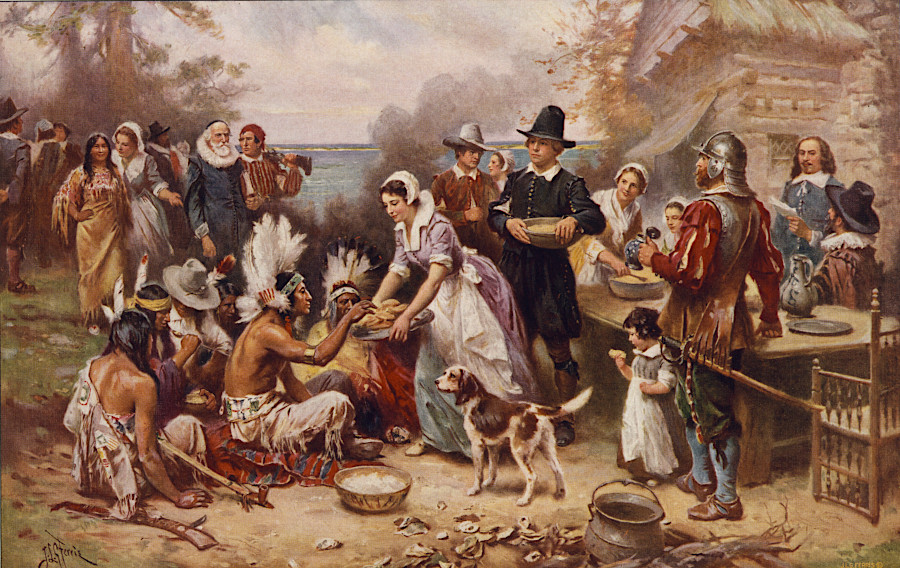
the New England version of the first Thanksgiving in 1621 included turkeys, unlike the 1619 Virginia version highlighted by Berkeley Plantation
Source: Library of Congress, The first Thanksgiving 1621
About 40 million turkeys are eaten at Thanksgiving meals, but not all birds end up on the dinner table. At Peaceful Fields Sanctuary near Winchester, there are turkeys and other animals rescued from inhumane conditions, or after falling off a truck on the way to a processing plant and being abandoned. The sanctuary is open occasionally for the public to mingle with the animals. Some who visit are vegans, while others have a turkey in the refrigerator but want to spend some time with the live animals as well.4
Between 2016-2019, the turkeys "pardoned" at the White House by the president at a Thanksgiving ritual were sent to Gobblers Rest at Virginia Tech. They completed their natural lives there, rather than ended up as the centerpiece for a big holiday meal.
In 2020, however, the two turkeys (Corn and Cob) were sent to Iowa State University. The president of the National Turkey Federation had raised them, and he was an Iowa farmer.5
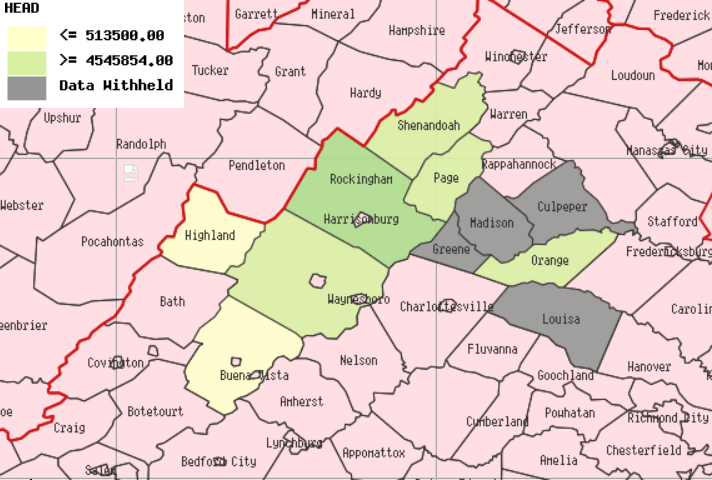
in 2020, Virginia was the #6 state in the production of turkeys
Source: US Department of Agriculture, Turkeys, Production Contract - Production, Measured In Head(Average -> 2017 - Annual)
In 2021, 275 farms in Virginia raised about 14.5 million turkeys. In the Shenandoah Valley, Skyview Acres raised just 100 turkeys while Hazard Mill Farms raised 19,000 birds with an average weight (unprocessed) of 40-45 pounds.
A crop of turkeys is produced in 19 weeks. Farmers can raise a brood for the entire time, or focus on the "starter phase" and raise them for five weeks and then sell to other farms that complete the "finishing" phase. The US Department of Agriculture allows small farmers to butcher poultry, if they choose to do the labor rather than sell to large processing plants.6
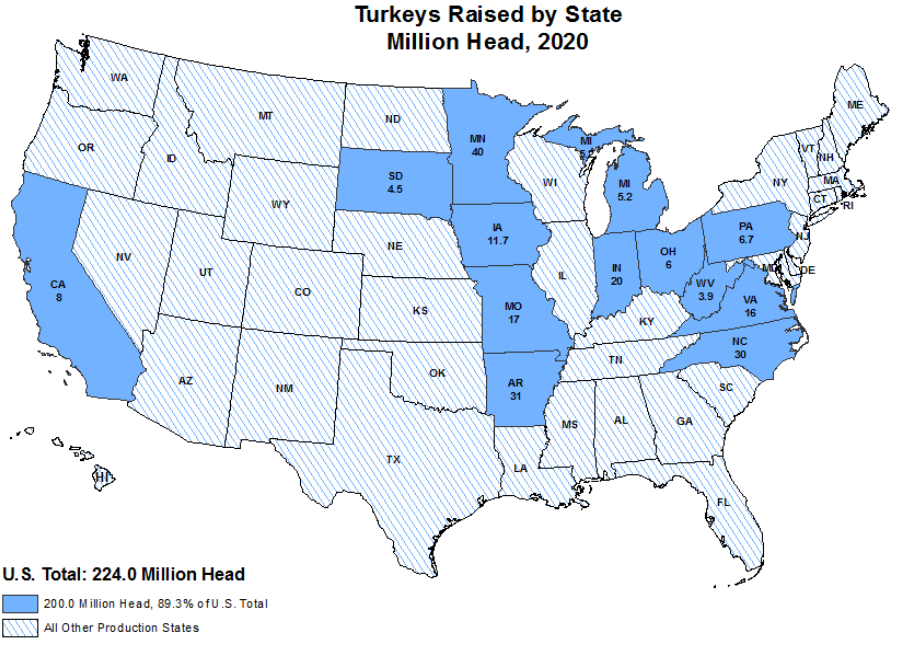
in 2020, Virginia was the #6 state in the production of turkeys
Source: US Department of Agriculture, Turkeys: Number Raised by State, US
Charles Wampler, the Rockingham County extension agent, initiated the methods of raising turkeys indoors. In 1922, he wrote to land grant universities across the country for advice. The only response came from the head of the Department of Poultry Science at Virginia Polytechnic Institute and State University (now Virginia Tech). That university provided research and ideas, the extension agent provided real-world experience.
Wampler later pioneered the technique of using artificial lighting indoors to producxe turkeys year-round rather than just in the spring, started the use of contract growers, developed the vertically-integrated business model for the industry, and founded the National Turkey Federation. Subsequent generations of the family remained strong supporters of Virginia Tech.
As of 2025, over 700 Virginia farms raised over 15 million turkeys annually. Virginia was the sixth-largest turkey producer in the United States; Minnesota became #1 in 1959. In Virginia, commercial turkey production is concentrated in the Shenandoah Valley; the state's top three turkey-producing counties are Rockingham, Augusta, and Shenandoah.
Rockingham County considers itself the "turkey capital" and celebrates its association with turkeys. The high school teams in the town of Broadway are the Gobblers, and drivers on Route 11 are greeted by statues of turkeys when they enter the county. The statue that was located on Route 33 disappeared in the 1970's and has never been recovered.7
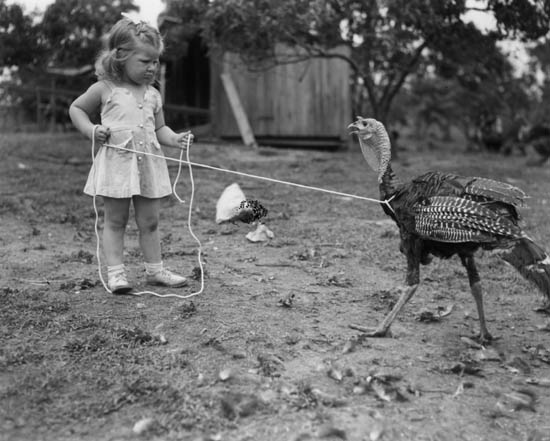
the Rockingham Turkey Festival started in 1939
Source: Virginia State Chamber of Commerce picture collection, Library of Virginia, Rockingham Turkey Festival, Harrisonburg, Virginia
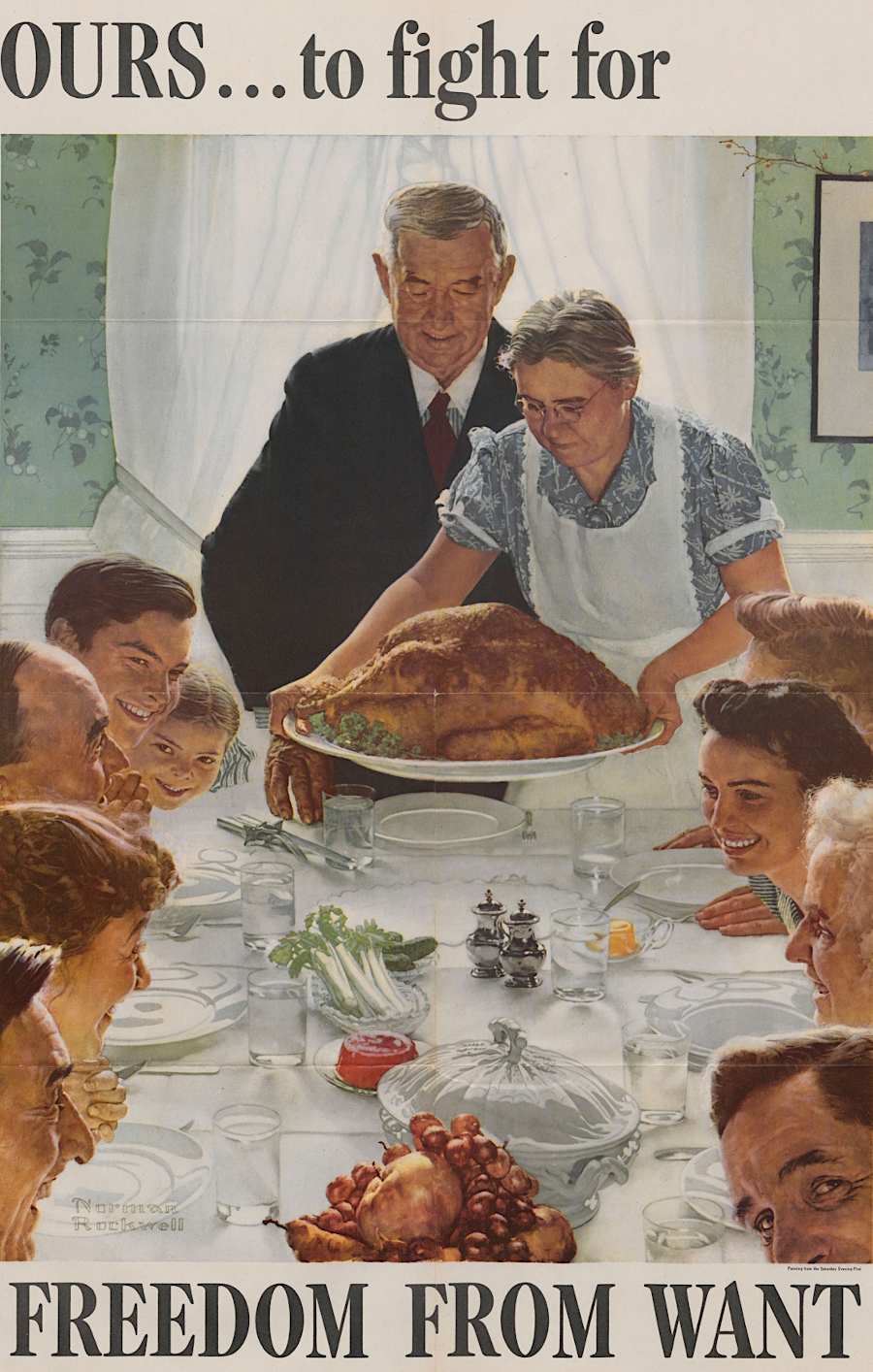
a turkey dinner illustrated one of the Four Freedoms highlighted by President Roosevelt in his 1941 inaugural address, after WWII broke out in Europe
Source: Public Domain Pictures, Freedom From Want Vintage Art